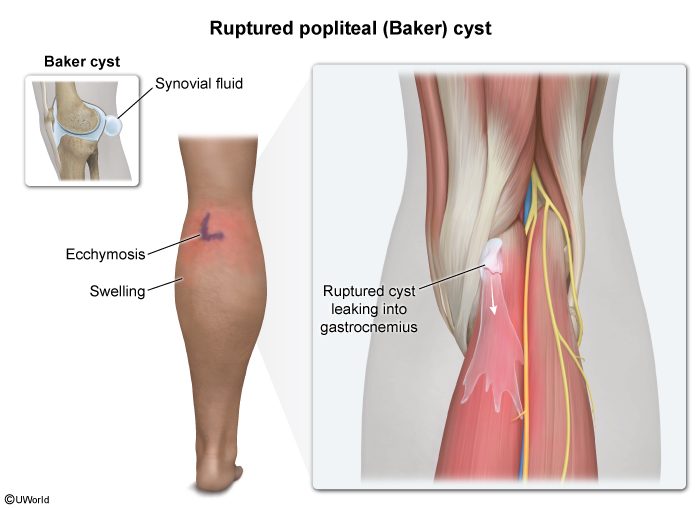Popliteal (Baker) Cyst
Article Sections
Introduction
A popliteal (Baker) cyst is a fluid-filled sac in the popliteal fossa that forms when synovial fluid from the knee joint extrudes into the gastrocnemius-semimembranosus bursa. It typically arises due to inflammatory or degenerative joint conditions or knee injuries that increase synovial fluid production.
Popliteal cysts are often asymptomatic, but larger cysts can cause posterior knee pain, swelling, and stiffness. The diagnosis is usually evident on examination, presenting as a soft mass in the medial popliteal space. In some cases, a cyst may rupture and cause calf pain and swelling that resembles deep vein thrombosis (DVT), making imaging (eg, ultrasonography) essential for an accurate diagnosis.
Pathogenesis and risk factors
The gastrocnemius-semimembranosus bursa lies between the semimembranosus muscle tendon and the medial head of the gastrocnemius in the postero-medial aspect of the popliteal fossa. Normally, a small communication exists between the bursa and the knee joint; however, under certain conditions excessive synovial fluid accumulates in the bursa and forms a cyst. This can be due to:
Continue Learning with UWorld
Get the full Popliteal (Baker) Cyst article plus rich visuals, real-world cases, and in-depth insights from medical experts, all available through the UWorld Medical Library.
Figures
